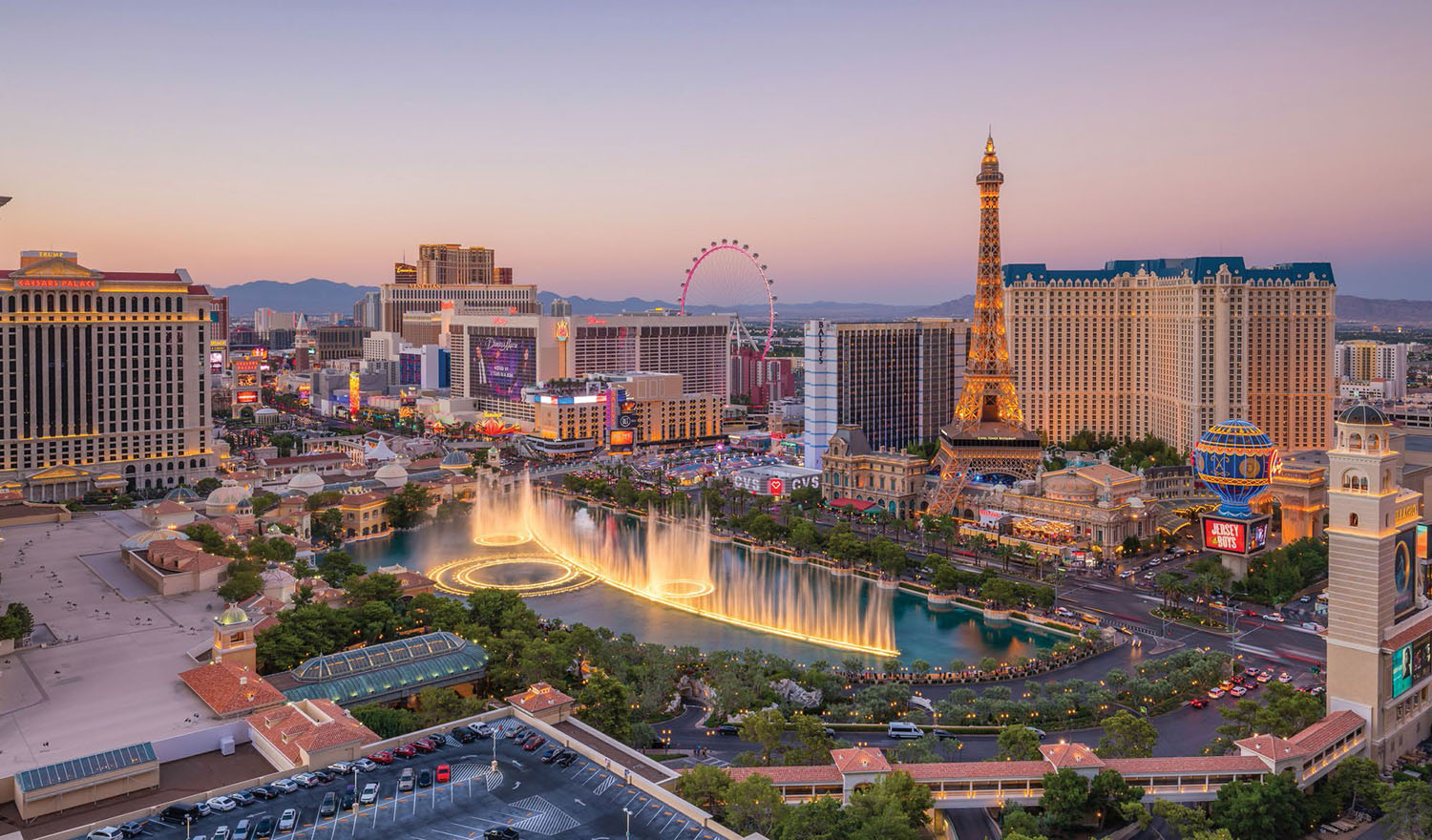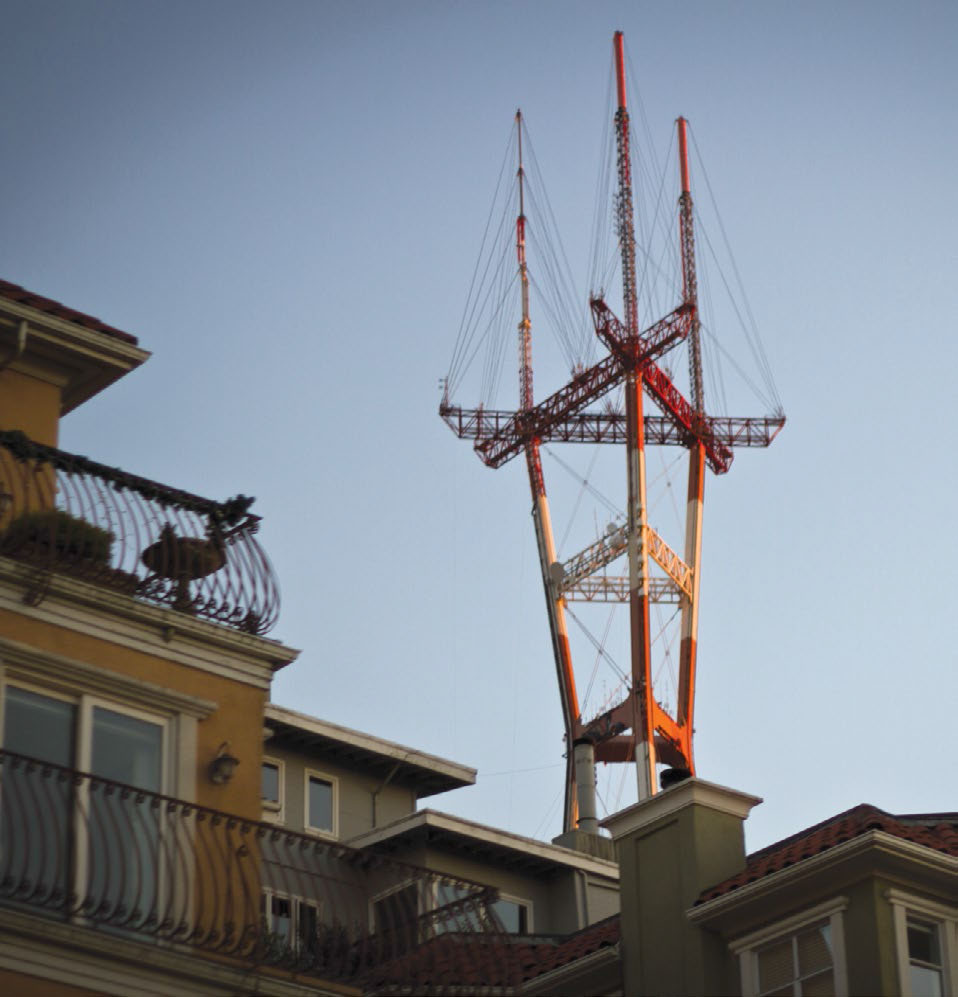Redefining Television at the 2019 NAB Show
The 2019 NAB Show is being promoted as the home of the story: The place where stories originate, are edited, manipulated, delivered and consumed. And looking at the list of conferences, sessions and speakers that are lined up for this year’s event—taking place at at the Las Vegas Convention Center, April 6-11—there’s a lot to back that up.

“When all is said and done, this business is about telling stories,” said Chris Brown, executive vice president of business operations for NAB. “And NAB Show is the only event that provides exposure to the full array of products and techniques that enhance the storytelling process.” The show also provides a forum to learn and network with the entire international media and entertainment ecosystem, he said, all with the goal of building and delivering better stories.
“The story is still the ultimate driver; the tech makes it come to life,” he said.
WHAT’S AROUND THE CORNER
But beyond the traditional line up of attractions and programs, the stories you may want to delve into at this year’s show will likely be found in new tracks and smaller corners—places that offer attendees a glimpse of what may be around the corner in 2020, 2025 and beyond.
NAB says one of its key priorities is to educate and inspire attendees, and in that vein will feature a handful of new exhibit areas this year: one focused on advancements in AI, another on cloud capabilities, a third on next-generation wireless technologies, another on autonomous vehicles and one on the growing eSports market.
Likewise, the show’s conferences will focus on issues impacting the professional video industry, from ATSC 3.0 and 5G to streaming and advertising.
What seems particularly interesting are those quiet technologies that are moving into the forefront in 2019. Take podcasting, which is being feted at this year’s show with a separate pavilion and live shows. The reason? The industry is solving formerly tricky questions of monetization and simultaneously embracing the realization that smartly told stories are pulling listeners in and keeping them there.
Consumers are living in a Netflix world, said Steven Goldstein, CEO Amplifi Media, who will speak at “Inside the Thriving Podcast Marketplace 1: The Exploding Business of Podcasting.” As a result, broadcasters need to move beyond any concerns they may have about finding an audience or anxiety they have that podcasts might disrupt the broadcast ecosystem.
“Broadcasters need to get beyond fear and embrace the delivery of content on other platforms,” Goldstein said. “It’s early days on the money side, but not so different than the early days of the internet or cable.” In two years, he said, it’s probably close to a billion dollar business.
Goldstein said successful podcasters have successfully learned to appeal to underserved niches—whether it be crime, comedy, daily news or fantasy sports. “Monetization for any but the most downloaded shows is a challenge,” he said. “We see experiments with paywalls and subscriptions, but mostly people expect podcasts to be free. What I love about the business is the innovation and trial. It’s all dynamically unfolding in real time.”
AI & MACHINE LEARNING
Other technologies garnering attention at the show will include AI and machine learning, a trend that one media executive likened to a technology that puts a media company light years ahead of those who have yet invested in artificial learning and machine learning.
Confused by what this means? Consider the transformation that’s already around us: TV viewers finding TV content with voice commands. That series of (sometimes) spot-on recommendations that show up in your streaming app. The list of news stories compiled by an automated database.
Sessions like “Transforming Television with Artificial Intelligence” will offer info on the fundamentals of how AI is already at work in media companies and how it can be harnessed to drive growth.
Other sessions like “Voice Control and AI: Pushing the TV Experience Forward” will look at the ways that voice-activated search, discovery and navigation are transforming the TV viewing process. But how do media companies take the next big step and ensure these search engines can handle queries that range from basic to complicated? Session participants will talk about the role of descriptive metadata plans and how advanced technology can enable deep analysis of video content on a broad scale.
The technology will be on display in the new “AI+Cloud Campus” that will explore advancements in these technologies and how they are reshaping content and media.
WASHINGTON TALK
The show is also wisely folding in sessions and keynotes that will keep attendees apprised of what’s going on in Washington—from pending changes to the nation’s Emergency Alert System to proposals to permit operations into previously protected areas of the spectrum band.
At “Ask the FCC and Capitol Hill,” commission staff will discuss its work on revamping the nation’s Emergency Alert System, proposing to make significant changes to the way public officials alert the public to emergencies through the national Weather Emergency Alert system by expanding the max character count, adding new geographic targeting and potentially adding multimedia and video to text alerts. “The American people want, expect and deserve the best possible public safety services, including the most precise targeting available for wireless alerts,” FCC Chairman Ajit Pai said in mid-February about the proposed changes.
REPACK DETAILS
The industry is also still grappling with issues related to the post-broadcast incentive auction TV station repack. In all, nearly 1,000 full-power and low-power TV broadcasters will need to move their operations, part of a process that raised almost $20 billion from 84 MHz of spectrum.
What do broadcasters need to consider next when it comes to the repack? According to Doug Lung, vice president of Broadcast Technology for NBC/Telemundo, pay close attention to finalizing the repack facility design—including antenna type, necessary tower modifications and major building work. From there, get components ordered and the crews scheduled as soon as possible.
“Once that’s done, look at how to keep the station on the air during the work,” Lung said. For example, determine if a new antenna is needed and if a broadband antenna could allow an interim antenna to be used on both the existing and new channels, he said.

Despite the FCC’s recent pronouncement that repack work was “ahead of schedule,” a number of broadcasters are expressing concerns about repack site completions, pointing to severe winter weather in some areas of the country and a shortage of qualified tower crews. The commission has said it will be flexible in considering STA applications and extensions if justified. Those issues will be up for discussion in sessions like “Managing the Spectrum Crunch” and “Challenges and Lessons Learned for FCC Repacking TV Stations, Including Sutro Tower.”
Addressing repack issues was a mighty challenge for the Sutro Tower, a 977-foottall tower that had been for years the tallest structure in San Francisco. The difficulties at the site included obtaining building permits, multiple seismic considerations and the challenge of rigging a tower with an unusual shape and size. At the session, the engineering firm Osborn Engineering will describe the technical challenges faced at Sutro Tower, examine the upgrade process to ATSC 3.0 during the repack and describe how the team plans to keep nine TV and three FM stations on the air during the process.
Other issues up for discussion include the recent FCC decision to allocate an additional $68.1 million to full-power and Class A stations from the repack fund, bringing the total allocated to $1.8 billion.
ESPORTS EXTRAVAGANZA
It’s clear that this NAB is not your father’s show; nowhere is that more evident than in the new eSports Experience area. New opportunities for advertising will be part of the session “Changing the Game: Rethinking the Sports Sponsorship,” while “Level-Up: How Video Gaming is Driving the Future of TV” looks at the current markets for streaming, eSports and gaming, and what these markets tell us about the future of video entertainment.

And this is where eSports and another key technology discussion—5G—will converge. The session “Game On: How 5G and eSports will Radically Change the Playing Field for Service Providers” will look at how 5G has opened the floodgates for a new influx of mobile, on-the-go gaming. As 5G works to eliminate the difficulties of cloud gaming, there are new opportunities for media companies to reimagine gaming. Those opportunities will be part of the new Destination 5G forum.
ATSC 3.0 will also be a major focus this year, with the ATSC 3.0 Academy series of sessions offering updates from real-world market trials. One such trial is the hybrid services architecture in place as part of “Chicago 3.0,” an ATSC 3.0 trial organized by Weigel Broadcasting Co. Launched in September 2018, this experimental next-generation full-power broadcast station will delve into the facility’s native IP transport infrastructure. This architecture is being heralded as a bridge that can connect broadcasters to the internet and bring local channels to the viewers with a familiar streaming experience via a broadcaster-controlled distribution platform.

Another sign that this is not your parent’s NAB: the new Influencer Series, a roster of “fireside chats” that will look at the new ways in which entertainment content, celebrities and technology are influencing media. More focus is also being given to the automobile via the new In-Vehicle Experience Pavilion, which will give attendees a look at connected cars, voice activation and audio design, and the ways in which ATSC 3.0 and HD Radio are powering these autos.
Approximately 100,000 attendees—from communities as diverse as cybsersecurity and advertising and virtual reality—are again expected to descend on Las Vegas this April. Attendees from more than 160 countries are expected alongside 1,700 exhibitors in 1 million square feet of exhibit space. Details can be found at nabshow.com.
Get the TV Tech Newsletter
The professional video industry's #1 source for news, trends and product and tech information. Sign up below.
Susan Ashworth is the former editor of TV Technology. In addition to her work covering the broadcast television industry, she has served as editor of two housing finance magazines and written about topics as varied as education, radio, chess, music and sports. Outside of her life as a writer, she recently served as president of a local nonprofit organization supporting girls in baseball.

